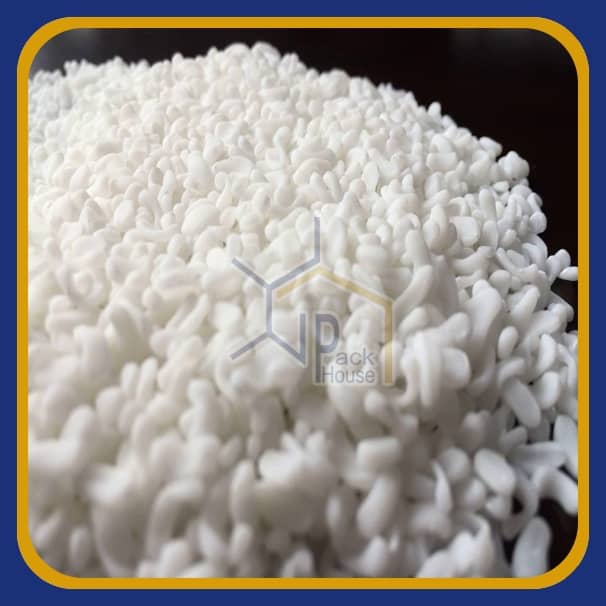
What is acrylonitrile butadiene styrene (ABS)?
List of Contents
Acrylonitrile Butadiene Styrene (ABS) is an impact-resistant thermal and engineering polymer. ABS is made of three monomers: acrylonitrile, butadiene and styrene.
Acrylonitrile: Acrylonitrile is a synthetic monomer made from propylene and ammonia. This monomer contributes to the chemical resistance of ABS and heat stability.
Butadiene: Produced as a by-product of ethylene production from steam crackers. This component delivers strength and impact to the ABS polymer.
Styrene: Produced by dehydration of ethylbenzene. Provides rigidity and processing capacity of ABS plastic.
How is acrylonitrile butadiene styrene (abs) made?
ABS is produced using the emulsion or continuous mass method. The chemical formula is “acrylonitrile butadiene styrene” (C8H8 · C4H6 · C3H3N) n. The natural material is a matte ivory color and is easily dyed with pigments or dyes.
ABS is a chemical-resistant resin but is easily attacked by polar solvents. More impact characteristics and heat distortion temperature is slightly higher than HIPS.
Acrylonitrile butadiene styrene has an extensive processing window and can be processed on most standard machines. It can be injected, molded or extruded. This melting temperature is low and is especially suitable for processing by 3D printing on an FDM machine.
ABS is placed between standard resins (PVC, polyethylene, polystyrene, etc.) and engineering resins (acrylic, nylon…) and often meets the requirements at a reasonable and affordable price.
The main suppliers of ABS plastics are: SABIC, RTP Company, LG Chem, Ineos and others.
Key properties of ABS plastic
- High hardness
- Impact resistance, even at low temperatures
- Good insulation properties
- Good welding capability
- Abrasion and pressure resistance
- Next stability
- High level brightness and excellent surface aspect
ABS has excellent mechanical properties, meaning it is hard in nature and therefore offers good impact resistance. Acrylonitrile butadiene styrene offers a high degree of surface quality.
Apart from these properties, acrylonitrile butadiene styrene has good electrical insulation properties.
Chemical properties of acrylonitrile butadiene styrene
- Very good resistance to dilute acids and alkalis
- Medium resistance to aliphatic hydrocarbons
- Poor resistance to aromatic hydrocarbons, halogenated hydrocarbons and alcohols
ABS is easily modified by the addition of additives and by changing the ratio of the three monomers of acrylonitrile, butadiene and styrene. Heat stabilizers, hydrolysis stabilizers, lubricants, UV stabilizers, etc. are used in unreinforced and reinforced grades to enhance the specific properties of materials.
Hence, the available points include the following:
- High and medium impact
- High heat resistance, and
- Weldable
Fire retardant grades can be obtained by inserting fire retardant additives or by combining with PVC. In order to increase hardness, impact resistance and dimensional stability, ABS can be reinforced with fibers, fillers, minerals, etc. This can lead to loss of transparency, performance resistance.
Limitations of acrylonitrile butadiene styrene
- Poor resistance to weathering
- Ordinary grades burn easily and continue to burn when the flame is removed
- You scratch easily
- Poor resistance to solvents, especially ketones and aromatic esters
- Some greases can cause stress cracking
- Low dielectric resistance
- Constantly low service temperature
ABS Mixtures – Thermoplastic Alloy
To overcome some of these limitations, ABS can be easily mixed or alloyed with other polymers such as polycarbonate (PC), polybutylene terephthalate (PBT) and polyamide (PA). This combination with polymers increases the range of available properties such as mechanical, thermal and so on.
ABS / PC is a short form used to combine acrylonitrile butadiene styrene / polycarbonate. It is a thermoplastic alloy composed of polycarbonate and acrylonitrile butadiene styrene. Both of these polymers alone are widely used and have very special properties and also have their drawbacks.
However, when combined, they form one of the most widely used industrial thermoplastics with:
- Advanced processing capability
- Good flow characteristics, resistance, hardness and,
- Good heat resistance
In addition, additives can be added to the composition. For example, UV stability and oxidation, fire safety and reinforcing agents such as glass fibers and mineral fillers are added to improve the strength and durability of the compound.
Acrylonitrile butadiene styrene / polycarbonate (ABS / PC) mixtures are commonly used in commercial and industrial applications such as automotive, electronics, telecommunications, etc. where they are hard, lightweight, heat resistant and easily Are processed.
Applications of acrylonitrile butadiene styrene (ABS)
Several features such as high impact strength, thermal performance, etc., make ABS suitable for use in automobiles, home appliances, electronics, building and construction, transportation industries and more.
De Automotive – When working with automotive applications, ABS is the preferred engineering plastic. There is a growing focus on weight loss in cars. ABS is widely used in the manufacture of auto parts as an excellent alternative to metals.
Applications of acrylonitrile butadiene styrene in automobile and transportation include:
- Toolbars
- Column correction
- Dashboard components
- Lining and door handles
- Seat backrest, seat belt components and so on
Home Appliances – ABS is used in home appliances. Includes appliance control panels, compartments (razor, vacuum cleaner, food processor), refrigerator liners and more. Household and consumer goods are the main uses of ABS. Keyboards are also usually made of ABS.
Pipes and fittings made of ABS are widely used due to their easier installation and decay, rust and corrosion. Properly covered, they will withstand a great deal of adverse conditions. They can withstand mechanical damage, even at low temperatures.
ABS is mostly used to make Lego, tools, sports equipment, gardening tools, medical applications include the production of nebulizers, compressors and more.
ABS processing conditions
Acrylonitrile butadiene styrene (ABS) has a wide processing window and can be processed on most standard machines.
Injection molding
Pre-drying is not always required for injection molding with a ventilator cylinder. If drying is required, 4 hours at 80 ° C is generally sufficient. Signs of moisture are streaks, streaks or bubbles in the mold, and if any of these are seen, the material must be pre-dried.
Melting point: 210-270 degrees Celsius
Mold temperature: from 40-70 degrees Celsius
Material injection pressure: 50 – 100 MPa
Injection rate: medium – high
extrusion
Before drying: 3 hours at a temperature of 70-80 ° C
Extrusion temperature: 210 to 240 degrees Celsius
Screw design: L / D ratio 25-30 is recommended
ABS properties for 3D printing
ABS is one of the most versatile materials available for 3D printing. ABS is present in the form of a long fibrous wound around the spool. The 3D printing process used with ABS is the FDM (Fusion Deposition modeling) process in which materials are heated and compressed through a fine nozzle to create your design in 250 micron layers.
View all commercially available ABS grades for 3D printing
Objects printed with ABS have slightly higher strength, flexibility and durability. It is a great material for prototyping and can be easily machined, sanded, glued and painted.
One of the main competitors of ABS 3D printing is PLA. Unlike ABS, PLA is a renewable plastic. It is therefore biodegradable while ABS is only biocompatible. However, like many plastics, ABS is recyclable.
ABS recycling and toxicity
As mentioned above, ABS plastic is a biocompatible and recyclable material. ABS does not have its own plastic number. Products made with ABS use recycling number 9.
ABS is 100% recyclable
ABS is non-toxic and harmless
ABS recycling
There are no known carcinogens and no known adverse health effects associated with exposure. Stable and non-washable.
Recycled ABS can be mixed with raw materials and produced at a lower cost to maintain high quality.
————————————————– ——————
PackHouse is a seller and supplier of acrylonitrile butadiene styrene with special price and first class quality. To prepare this material, contact the experts of the polymer department at 02186053175.
Benefit from the free consulting services of our technical department colleagues by entering your information in the box below!
————————————————– ——————
